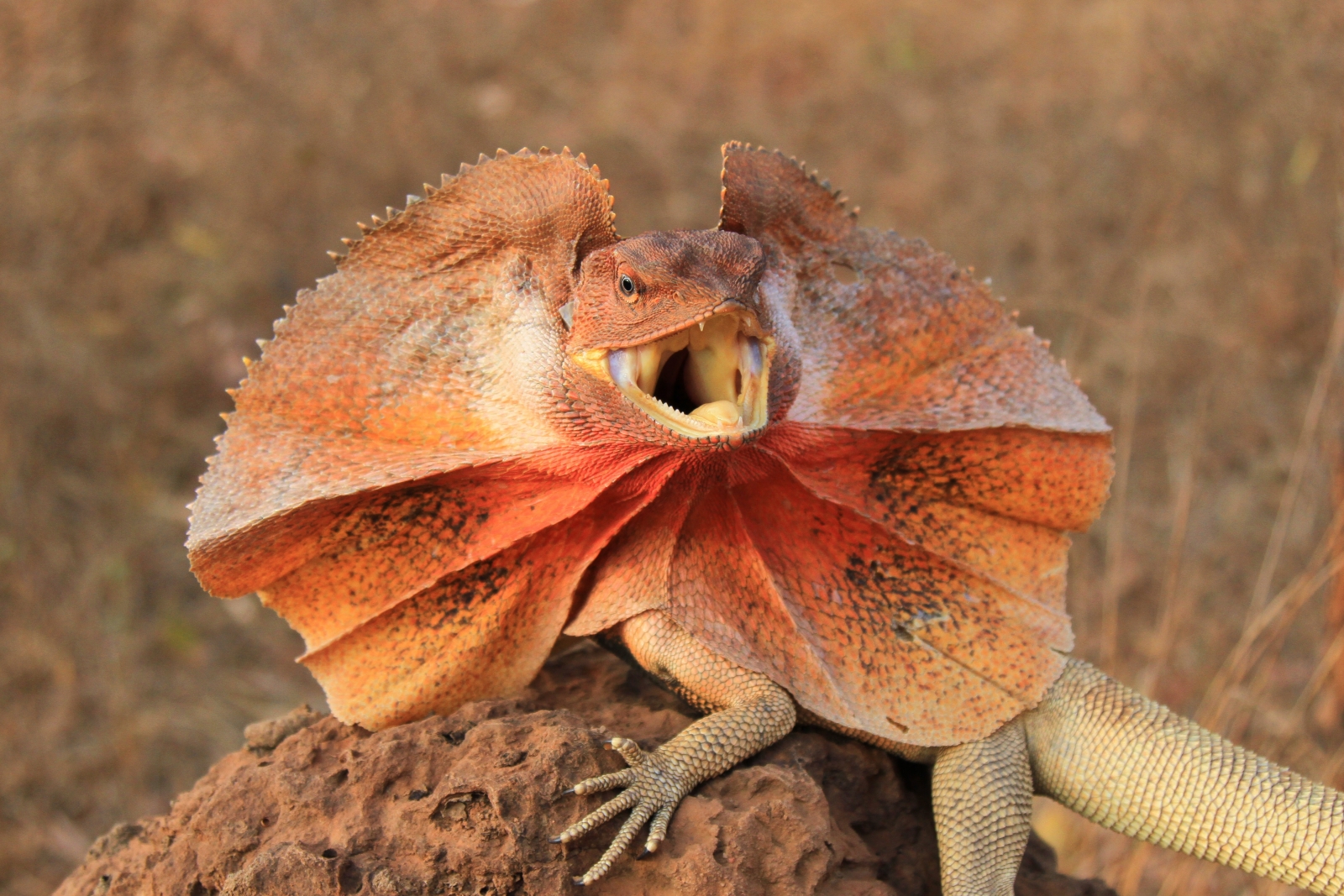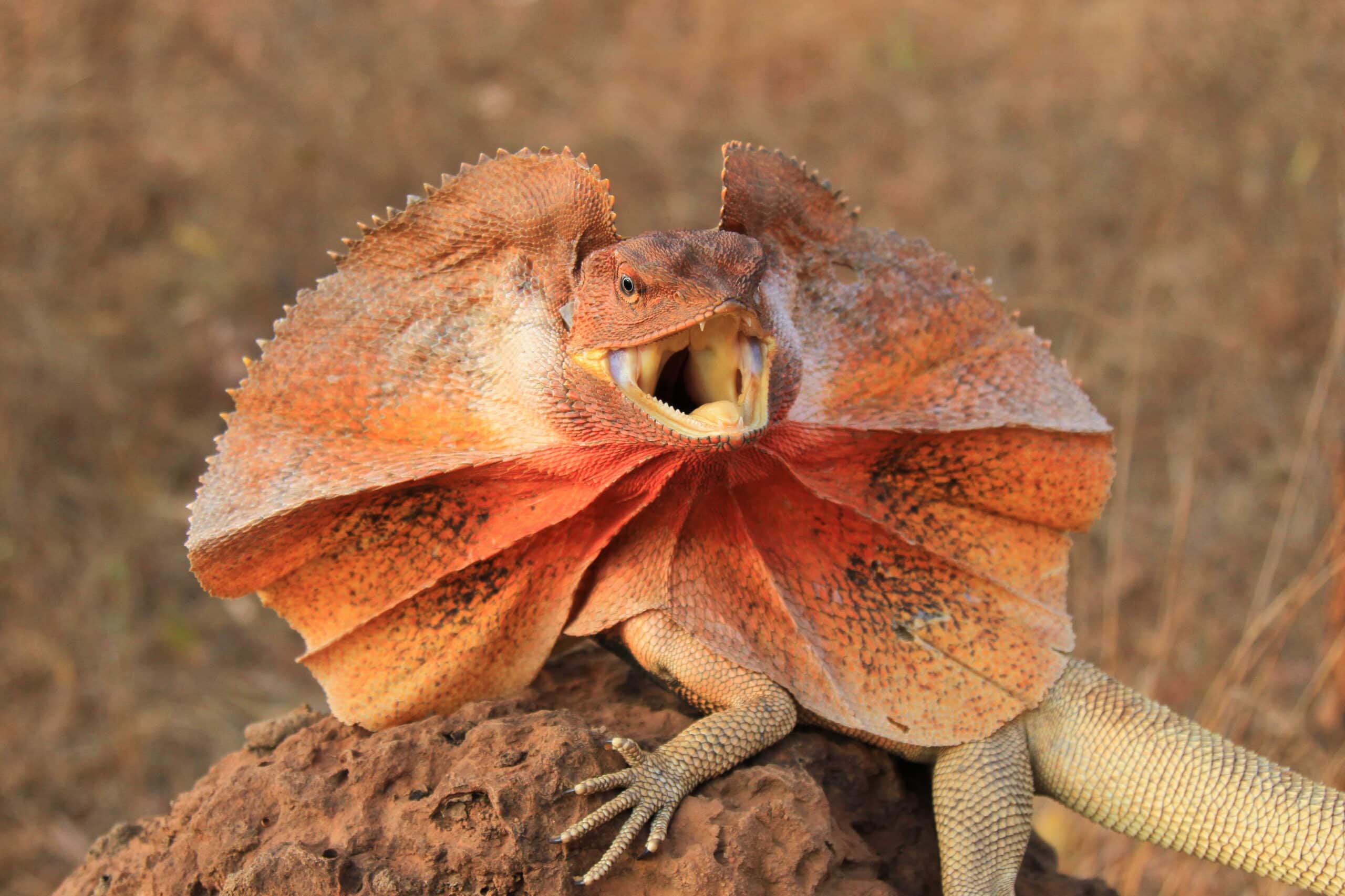Expert tips on breeding the frilled dragon.
Breeding success with frilled dragons (Chlamydosaurus kingii) is not difficult if proper parameters are met in captivity. Start with a healthy, well-acclimated sexed pair or trio of adult lizards. Selecting lizards that are 2 to 3 years old is your best choice. Smaller, growing females should not be bred, as many serious issues, such as egg-binding, may occur.

Photo by shutterstock/matt cornish
Frilled Lizard.
Brumate to Procreate
A two-month winter brumation to stimulate breeding in the spring time is highly recommended, but this must be done with careful observation. Three months before spring breeding season begins, decrease ambient day and night temps, which are normally kept between 85 and 95 degrees Fahrenheit in the daytime and 70 to 80 degrees in the nighttime, down 10 degrees each. Shorten the light cycle by about two hours. Perform these temperature and light changes gradually, over the course of two weeks to a month. It is at this time that you may consider separating the male from the female or females. I decrease mistings from about once a day down to every other day. The frilled dragons become less active and they take in less food, as well.
About every seven to 10 days, I will offer food if they eat and increase the ambient temps back to normal for four days for proper digestion. If they do not eat, I don’t bother to increase the temps. Repeat this action for up to two months if the lizards maintain a healthy look. If they do not maintain a healthy look, break the cycle and get them back to normal lighting and temps. Breeding may still occur in the spring, even with a shorter brumation.
Once the wintering process is finished, it is time to prepare for breeding season. All lighting and heating is back to the way it was before. This does not have to be as gradual as before. You can heat them up in a week’s time, but remember that the temperature and lighting should be up to normal levels by the time food is given. Frequent daily mistings will hydrate and stimulate the lizards to breed. Make sure all females are plump and eating well before being introduced to the male. Increase the calcium supplementation for the female’s food during the entire breeding season. I dust all live feeder insects with calcium during the breeding/egg-laying season. For multivitamins, I keep them between once and twice a week, as per the usual schedule.
Copulation may or may not be observed, but eggs will be dropped around 45 days after fertilization takes place. Typically, eggs are laid every 45 days for two to four clutches. Make sure a suitable nest box is available. I use the same substrate mix of coco fiber, play sand and organic potting soil for the egg box as you do for regular substrate, which should be in a container that is a minimum size of a 12 inches long, 10 inches wide and 8 inches tall. Be sure to add enough water so that the dirt can be packed well by the female after laying. At least a 6-inch layer of well-moistened substrate should fill the egg box. Females are very quiet and careful at burying their eggs, so it’s a good idea to check the box frequently. They will pat down the top layer after egg deposition with their snouts to where you’d never know they laid a clutch of eggs.
It is very important to keep an eye on the weight of the females. If they are losing weight after egg deposition, separate them from the male for at least a month to regain the necessary nutritional levels and overall weight that they exhibited prior to egg laying.
I use the same substrate to incubate the eggs, which is placed in a deli cup or sandwich container with one small hole in each upper side of the container. The moisture of the substrate should be moist, but not wet. When mixing in the water, squeeze out excess with a fistful of substrate in your hands.
Clutch size can range from four to 11 eggs, the average being six to eight. Place eggs in an incubator at 82 to 84 degrees, and babies should hatch after approximately 90 to 110 days if the eggs are fertile.
I raise hatchlings as a clutch in something the size of a 40-gallon breeder tank. I outline their care in the November 2012 article of REPTILES. Important steps to note are misting them three times a day and offering small insects (tiny crickets that are two-thirds the size of the lizard’s head) about three times a day so that all food is eaten. They can also eat mini mealworms and baby roaches, as well.
Scott Corning is a herpetoculturist with more than 23 years’ experience breeding reptiles, especially Agamidae and Iguanidae, with special focus on lesser-known, more advanced species. He has managed reptile stores, bred countless species, and had many articles and photographs published in publications worldwide. Visit his website at SailfinDragon.com.


